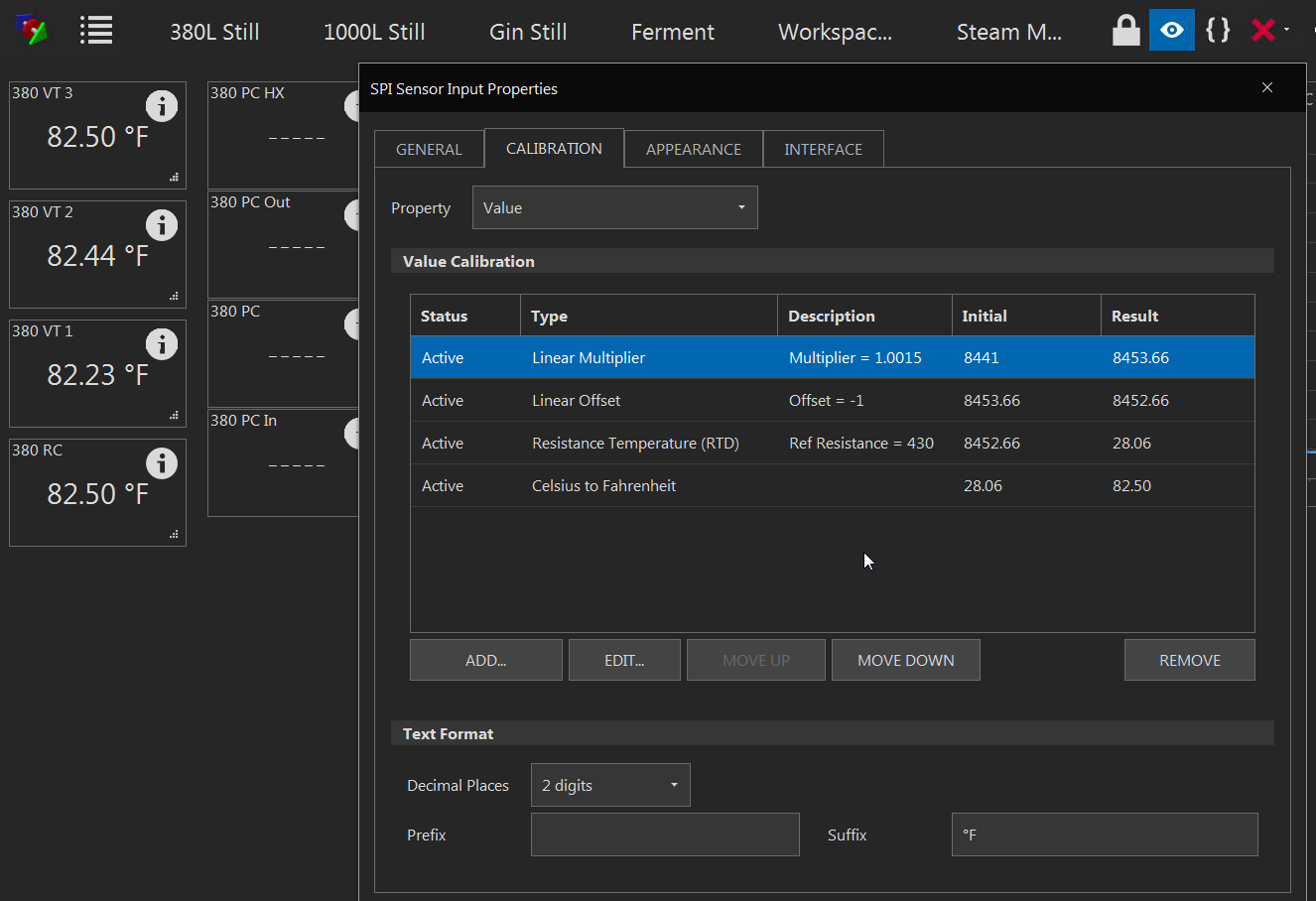RTD Update...I received the 0.01% 100ohm and 0.1% 10 and 20 ohm resistors and made up three plugs and spent several hours testing and found a procedure to have a RTD amp calibrated in about a minute...
Set up RTD SPI device in BC with multiplier, offset, RTD, and CtoF calibrations in that order (trust me on this, this is where half the time went)
put the higher ohm test plug in and adjust the multiplier to read the theoretical temp for that test plug (~124.8F for 120ohms)
put in the 100ohm test plug and make the linear offset take it to 32.0F
go back to 1st test plug, it should be close, adjust if needed
go back to 100 ohm, it should be on, I did not experience it being off at this point, but it is possible.
plug in the middle test plug(110ohm in my case) check if it is linear... (all of mine were very close)
Here is what I got with my 4 PT100 probes in a jar after the above calibration:
(I can re visit the probe that is a couple tenths off, this is the RP-3 assembly that had the raw readings way off in previous post, I am really happy)
I will do a write up next week...
View attachment 702199














![Craft A Brew - Safale S-04 Dry Yeast - Fermentis - English Ale Dry Yeast - For English and American Ales and Hard Apple Ciders - Ingredients for Home Brewing - Beer Making Supplies - [1 Pack]](https://m.media-amazon.com/images/I/41fVGNh6JfL._SL500_.jpg)

















































